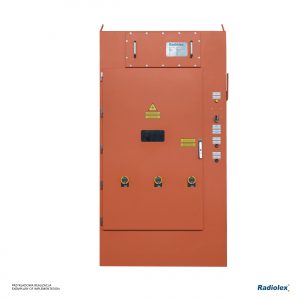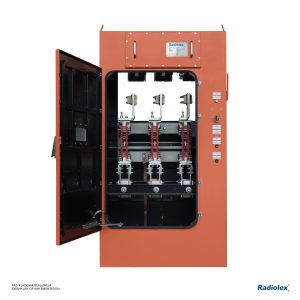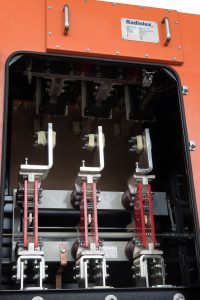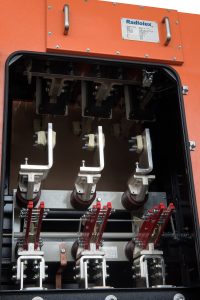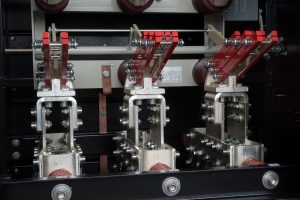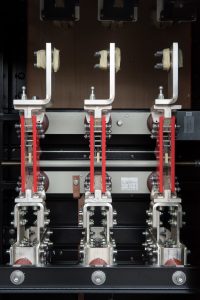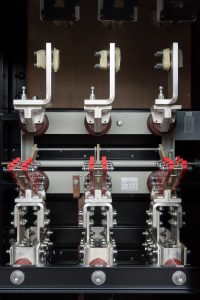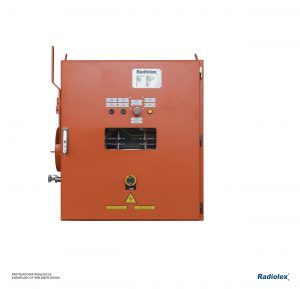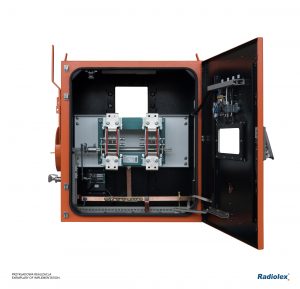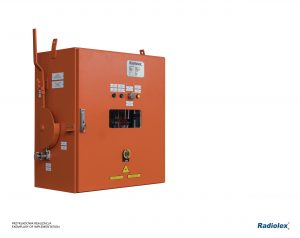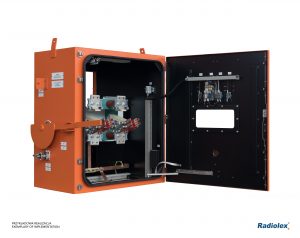Our designers used Autodesk Inventor software to complete the overall design of the enclosures. Production took place in-house at the Radiolex facility in Gdańsk. By using TripleShield technology, the housing has achieved a high corrosion class, which allows it to operate uninterrupted in difficult conditions atmospheric conditions for a long period of time. The structure is made in two different paint colors: inside it is RAL9005, outside it is RAL2010. The enclosures are equipped with pressure safety flaps in the roof, whose task will be to direct the generated energy and hot gases in a direction that is safe for the operator in the event of an arc fault.
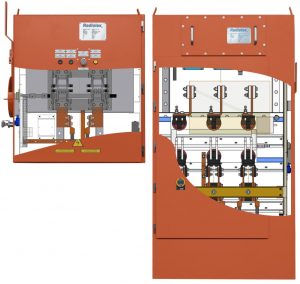
Fig 1. Set of switchboards for powering the mill – a photo of the actual construction and a shot of the interior from the Inventor program
The prefabrication department was responsible for extending the bus bridge from the disconnector outside the housing, which would allow the rails to be connected to the windings of the engine driving the mill in the mine. The housing is equipped with internal lighting, voltage indication, heater and numerous locks preventing opening of the disconnector under load. The infrared windows used enable control of the main current path with a thermal imaging camera while the device is operating.

Un – rated voltage,
In – rated current,
f – frequency,
IP – the degree of protection provided by the housing against the ingress of liquids and solids
IK – mechanical strength classification.
Table 1. Electrical parameters of switchboards
Before being placed on site, this series of products was type tested in accordance with the PN-EN 62271-200 standard in the laboratory of the Institute of Electrical Engineering in Warsaw. The tests included, among others: checking the short-time withstand and peak withstand currents, insulation tests, checking the IP and IK protection levels, and the rated current was determined on the basis of temperature rise tests.
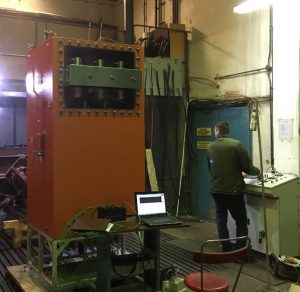
Fig 2. Photo taken during tests at the Electrical Engineering Institute in Warsaw


 en
en  PL
PL  DE
DE  LT
LT  SV
SV  FR
FR  ES
ES  HU
HU  NO
NO  DK
DK  FI
FI  RU
RU 
